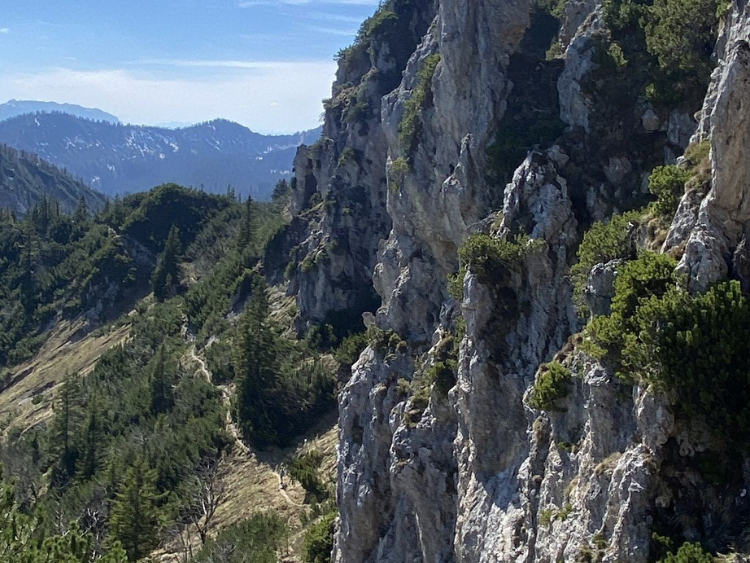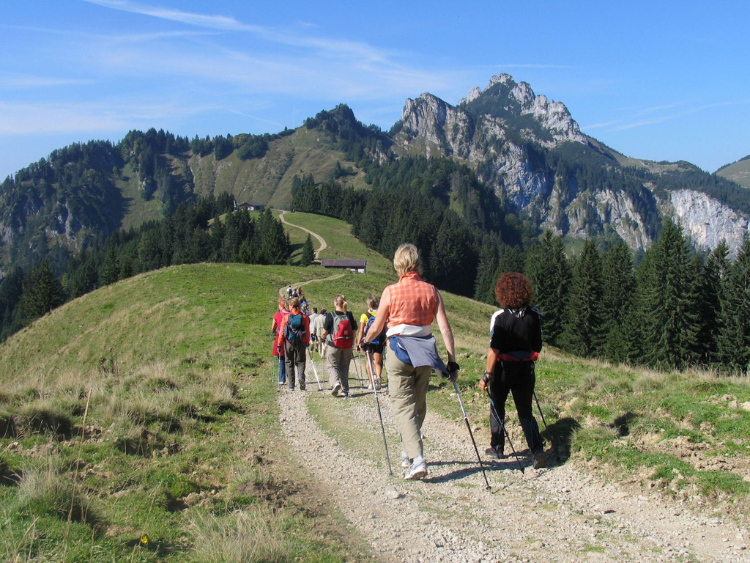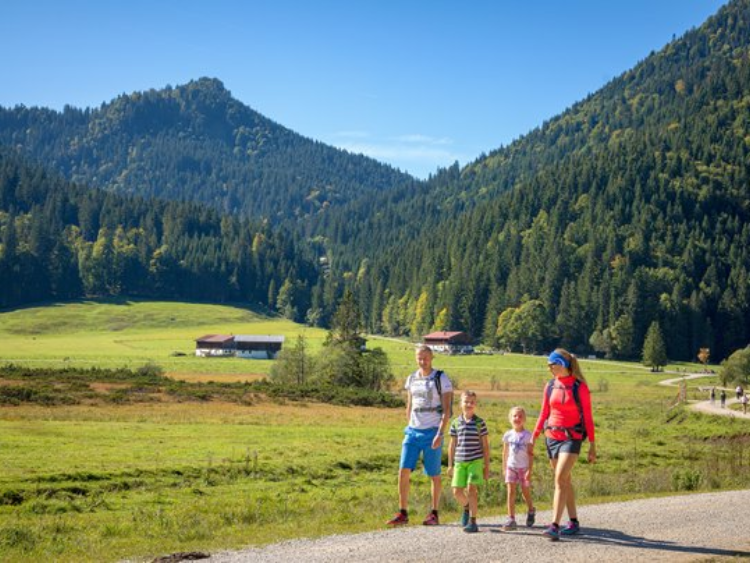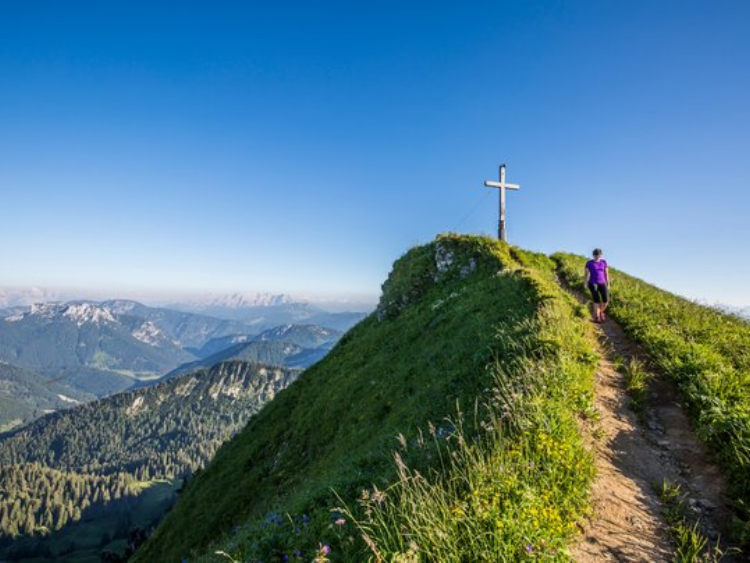
The Chiemgau Alps are situated in the southeastern part of Bavaria, Germany, near the border with Austria. This mountain range is known for its picturesque landscapes, charming villages, and outdoor recreational opportunities such as hiking, skiing, and mountaineering.
The Chiemgau Alps are part of the Northern Limestone Alps and extend from the eastern shore of Lake Chiemsee to the border with Austria. They are characterized by rugged peaks, lush meadows, deep valleys, and pristine lakes, offering visitors a variety of activities to enjoy throughout the year. The region is also known for its cultural heritage, including historic towns, castles, and traditional Bavarian customs. Popular destinations within the Chiemgau Alps include the Watzmann mountain, the Berchtesgaden National Park, and the historic town of Berchtesgaden itself.

The Chiemgau Alps have been around for much longer than any recorded history of their discovery or naming. However, if you're referring to when they were officially recognized or when the term "Chiemgau Alps" came into common use, it's a bit unclear. The region has likely been known by locals and travelers for centuries, but the formal recognition and promotion of the area as a tourist destination likely occurred in the 19th or 20th century as tourism in Bavaria and the Alps region grew.

The Chiemgau Alps, as a natural geological formation, were not "invented" by any individual or group. They are part of the broader Alps mountain range, which formed millions of years ago through tectonic processes. The name "Chiemgau Alps" likely emerged over time as a way to designate the specific subrange of the Alps that is located in the Chiemgau region of Bavaria. It's a geographical term rather than an invention attributed to any single person.

The name "Chiemgau Alps" originates from the region in which this subrange of the Alps is located, namely the Chiemgau region of Bavaria, Germany. The term "Alps" refers to the broader mountain range, while "Chiemgau" specifically refers to the area around Lake Chiemsee and its surrounding region.
Lake Chiemsee, the largest freshwater lake in Bavaria, lies at the northern foothills of the Chiemgau Alps. The term "Chiemgau" itself is derived from the Old High German word "Gau," which referred to a historical administrative region or district, and "Chiem," which likely has its roots in the Celtic word for "valley" or "flowing water."
Therefore, the name "Chiemgau Alps" simply designates the portion of the Alps mountain range that lies within or adjacent to the Chiemgau region of Bavaria.




The Chiemgau Alps are an excellent destination for hiking enthusiasts for several reasons:
1. Diverse Terrain: The region offers a diverse range of landscapes, including lush meadows, dense forests, rugged peaks, and crystal-clear lakes. This variety provides hikers with a wide range of trails to explore, catering to different skill levels and preferences.
2. Scenic Views: Hiking in the Chiemgau Alps rewards adventurers with breathtaking panoramic views of the surrounding mountains, valleys, and lakes. Whether you're ascending a peak or strolling through a picturesque alpine meadow, there's no shortage of stunning vistas to enjoy.
3. Well-Marked Trails: The area is well-known for its extensive network of hiking trails, many of which are well-marked and maintained. Whether you're looking for a leisurely stroll or a challenging trek, you'll find trails suited to your preferences, along with information boards and signposts to help guide your way.
4. Accessibility: The Chiemgau Alps are easily accessible from nearby towns and cities, making them a convenient destination for hikers of all levels. Whether you're staying in one of the charming villages nestled in the valleys or exploring the region as a day trip from Munich or Salzburg, you'll find plenty of options for outdoor adventures.
5. Outdoor Activities: In addition to hiking, the Chiemgau Alps offer a wide range of outdoor activities for nature lovers, including mountain biking, climbing, paragliding, and water sports on Lake Chiemsee. This makes it an ideal destination for adventurers looking to immerse themselves in the great outdoors.
Overall, the combination of stunning scenery, well-maintained trails, and a variety of outdoor activities makes the Chiemgau Alps a paradise for hiking enthusiasts seeking adventure and exploration in the heart of Bavaria.






Hiking in the Chiemgau Alps can be enjoyed throughout the year, but the best time for hiking may vary depending on your preferences and the specific trails you plan to explore.
1. **Spring (March to May):** Spring is a beautiful time to hike in the Chiemgau Alps as the snow begins to melt, and the landscape comes alive with blooming flowers and green foliage. The temperatures are generally mild, and the trails are less crowded compared to the peak summer months.
2. **Summer (June to August):** Summer is the peak hiking season in the Chiemgau Alps. The weather is warm and sunny, making it ideal for long hikes and enjoying outdoor activities. However, popular trails and tourist attractions can be crowded during this time, especially in July and August.
3. **Autumn (September to November):** Autumn brings stunning foliage colors to the Chiemgau Alps, making it a picturesque time for hiking. The temperatures start to cool down, and the trails are less crowded than in summer. September and early October are particularly beautiful as the leaves change color.
4. **Winter (December to February):** Winter hiking in the Chiemgau Alps can be magical, especially if you enjoy snowy landscapes. However, it's essential to be prepared for cold temperatures and potentially icy or snowy trails. Certain lower-elevation trails may remain accessible during the winter months, but higher-elevation routes may require specialized equipment like snowshoes or crampons.
Overall, the Chiemgau Alps offer hiking opportunities year-round, each season providing its own unique charm and experiences. Just be sure to check trail conditions and weather forecasts before embarking on your hike, and always come prepared with appropriate gear and clothing.